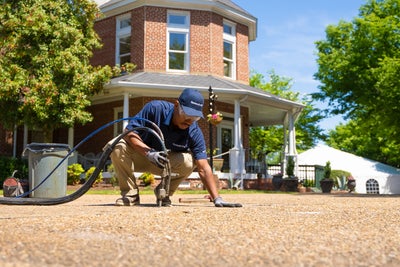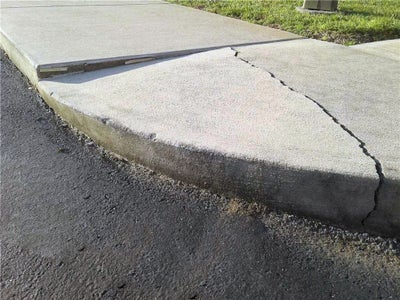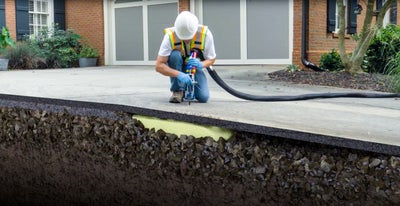How Does Concrete Become Uneven?

Uneven concrete surfaces are more than just an eyesore—they pose safety hazards and can lead to costly repairs if ignored. Understanding how concrete becomes uneven and sinks is key to preventing these issues. Several factors can contribute to concrete settling over time, from shifting soil to improper installation. Let’s explore the common causes and how you can address them before they turn into bigger problems.
Environmental Factors Leading to Uneven Concrete
Uneven concrete isn’t just an aesthetic issue; it can also create safety hazards and lead to more significant damage over time.

Soil Erosion: Water runoff or poor drainage can wash away the soil beneath concrete slabs, causing them to sink or tilt over time. This creates unstable and uneven surfaces that can worsen if not addressed.
Frost Heave: Freezing and thawing cycles cause soil to expand and contract. As the ground shifts with the changing temperatures, concrete slabs may crack or become uneven, especially in colder climates.
Tree Roots: Expanding roots from nearby trees can push up concrete slabs, creating cracks and uneven surfaces. This is common in areas with large trees planted too close to concrete.
Addressing the causes of uneven concrete early can save you from costly repairs and potential safety risks. Identifying and managing these environmental factors is key to maintaining a stable, level surface.
Structural Issues Contributing to Uneven Concrete

Foundation Settling: Changes in soil moisture levels can cause the foundation beneath the concrete to shift or settle, which often leads to uneven surfaces. When the ground beneath a concrete slab moves, it follows, resulting in an uneven or tilted surface.
Cracks and Fractures: Existing cracks in concrete may widen over time due to soil movement, shifting foundations, or pressure from above. As these cracks spread, they can cause the concrete to become uneven, creating a tripping hazard and further compromising the surface’s stability.
Load Stress: Concrete is designed to withstand weight, but heavy vehicles, equipment, or continuous foot traffic can cause the slab to settle unevenly. Over time, the pressure from these loads can compress the soil beneath the slab, leading to an imbalanced, uneven surface.
Signs That Your Concrete is Sinking
Sinking concrete can start with small, subtle changes, but over time, these signs can lead to bigger issues that affect both the safety and the stability of your property. Recognizing the early warning signs can help you address the problem before it gets worse.
If you notice any of these signs, it’s time to act. Left unchecked, these problem signs can lead to more serious structural problems and costly repairs. By addressing these issues early, you can keep your concrete level, safe, and long-lasting.
Preventing and Repairing Uneven Concrete
Proper Installation: Ensuring concrete is installed correctly from the start is crucial for preventing uneven surfaces. This includes using the right mix, proper levelling techniques, and allowing adequate curing time to ensure a stable and even surface.
Adequate Drainage: Effective drainage around your concrete surfaces helps prevent water from eroding the soil underneath. Installing proper drainage systems and maintaining clear gutters can mitigate the risk of uneven concrete caused by water damage.
Regular Self-Inspections: Routine inspections can help catch early signs of uneven concrete before they become significant issues. Regularly checking for cracks, shifting, or pooling water allows for timely repairs and adjustments before the problem gets worse.
Groundworks Concrete Solutions: To repair sinking concrete, it is imperative to get professional help. Groundworks offers comprehensive concrete solutions for your home. We ensure your concrete remains level and durable for years to come.
Trust Groundworks for All Your Concrete Repair Needs

Uneven concrete can result from a variety of environmental and structural factors, but understanding these causes is the first step in preventing and addressing the issue. Whether it’s soil erosion, foundation settling, or poor drainage, taking early action can save you from costly repairs and safety hazards down the road. Regular maintenance, proper installation, and timely repairs are essential for keeping your concrete stable and long-lasting.
If you’re noticing signs of uneven concrete, don’t wait. Contact Groundworks today for expert solutions to protect your home and restore your concrete surfaces.



